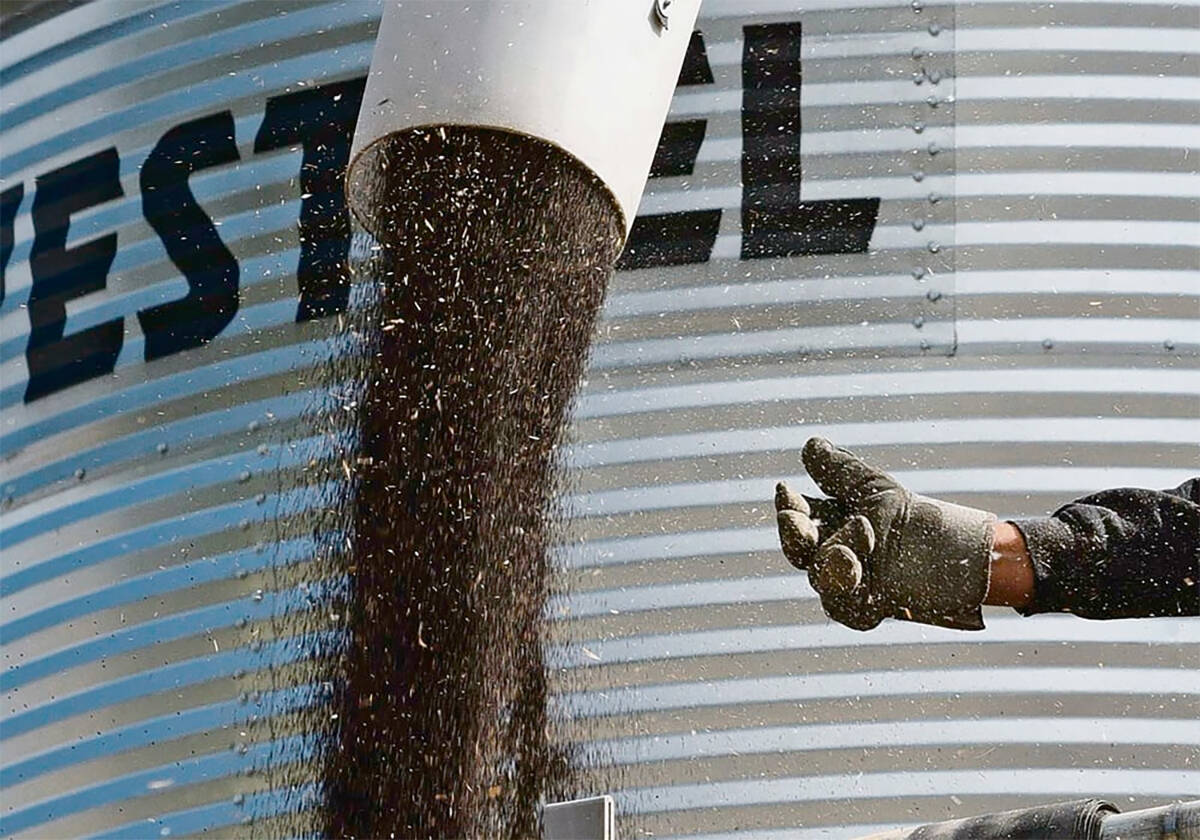If farmers knew more about grain marketing, more of them would have voted for the Canadian Wheat Board in the recent barley plebiscite, says a University of Saskatchewan agricultural economist.
Gary Storey said too many producers simply don’t understand how much they benefit from single-desk selling.
“I think the evidence is such that the CWB should have received an overwhelming endorsement by barley producers,” he said.
The co-author of a recent study that praised the board’s performance in world barley markets, Storey said he’s worried that farmers are making important decisions without a good base of knowledge.
Read Also

Farmers urged to be grain-safe this fall
Working around grain bins comes with risk, from farmers falling to drowning in grain: Experts have five tips to help avoid grain-related accidents this harvest.
“I’m breathing a sigh of relief on this one, but I’m concerned about the future.”
The study by Storey and three other agricultural economists concluded the board’s status as a single-desk seller of feed and malting barley enabled it to snag higher prices from world markets.
The plebiscite asked farmers to choose between selling all their barley through the wheat board or on the open market. The result was 62.9 percent for the board and 37.1 percent for the open market.
More information required
Storey said those results tell him policy makers, farm organizations, educators and the media must do a better job of informing farmers about marketing issues.
“We’ve got a problem with farmers being sufficiently knowledgeable about how different marketing systems work,” he said. “I’m not putting down farmers at all. It’s just that it’s a very complex issue.”
He said one of the problems is the amount of bad information circulated on grain marketing issues, which may lead farmers to make bad decisions with potentially disastrous long-term consequences. However, Storey added he also realizes that different farmers have different attitudes toward “risk aversion.”
University of Manitoba agricultural economist Daryl Kraft, who has done studies showing farmers gain a premium from single-desk selling of wheat, said the vote shows some farmers are more concerned about freedom of choice than the bottom line.
Pay to have a choice
“Some of them would like to have that choice even though the eventual implications are that they realize less income,” he said. “That’s a trade-off they’re willing to accept.”
Kurt Klein, an economist from the University of Lethbridge, said the 37.1 percent support for the open market was higher than he expected, given what he called the lopsided question that didn’t let farmers vote for a dual market.
“I think the vote was much too close for the wheat board’s comfort,” he said. “It indicates the fight is far from over and in fact it is going to give the no side a lot of added momentum, especially in Alberta.”
He also expects the result will encourage the Alberta government to try to withdraw from the wheat board’s jurisdiction.
Kraft said given the sizable majority that voted for the open market, the directors of a reformed CWB will have to develop more flexible approaches to barley marketing.
They should develop contracts that provide for more open price discovery systems, and should consider a system in which the board would buy feed barley at export position from commercial grain companies, while retaining its status as monopoly exporter.
He added it would be a mistake for the board and its supporters to view the vote as a blanket endorsement of existing grain marketing policies.
“It really focuses how important it is for this new CWB act to be passed and for the board to get on with its job of being accountable and develop programs that gain the support of more and more farmers.”














